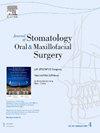使用机器学习识别不同解剖部位的高危粘液表皮样癌患者的预后工具的开发。
IF 2
3区 医学
Q2 DENTISTRY, ORAL SURGERY & MEDICINE
Journal of Stomatology Oral and Maxillofacial Surgery
Pub Date : 2025-10-01
DOI:10.1016/j.jormas.2025.102490
引用次数: 0
摘要
目的:粘液表皮样癌(MEC)通常发生在唾液腺,在不同的解剖位置都有记载。本研究旨在开发机器学习模型,对不同解剖部位的MEC患者进行有效的预后预测,并为临床环境中识别高风险患者创建一种新的工具。方法:对6280例不同解剖部位的MEC患者进行回顾性队列研究。COX回归分析确定预后变量。构建了支持向量机(SVM)、随机森林(RF)、广义加性模型(GAM)、极限梯度增强(XGBoost)和光梯度增强机(LightGBM) 5个机器学习模型。采用准确度、召回率、精密度和受试者工作特征曲线下面积(AUC)来评估模型的性能。但是,没有执行外部验证。表现最好的模型被发展成一种预测工具。结果:GAM优于其他模型,并且开发了一个基于网络的工具,用于识别来自不同解剖位置的MEC病例中具有不同预后风险的患者,支持临床决策,基于临床特征的个性化治疗策略,确保量身定制的治疗计划和优化资源分配。伸展、年龄、病理分级、临床分期和n分期是最终模型中最重要的变量。结论:本研究建立了一个在线工具,利用GAM来帮助识别MEC高危患者,提高临床实践中的预后准确性。解剖部位对生存结果没有显著影响,为MEC的共同发病机制提供了有价值的见解。本文章由计算机程序翻译,如有差异,请以英文原文为准。
Development of a prognostic tool using machine learning to identify high-risk mucoepidermoid carcinoma patients across diverse anatomical sites
Objective
Mucoepidermoid carcinoma (MEC), typically arising in the salivary glands, has been documented in various anatomical locations. This study aimed to develop machine learning models for efficient prognosis prediction in patients with MEC across different anatomical sites and to create a novel tool for identifying high-risk patients in clinical settings.
Methods
A retrospective cohort study involving 6280 patients with MEC from diverse anatomical sites was conducted. COX regression analysis identified prognostic variables. Five machine learning models—Support Vector Machine (SVM), Random Forest (RF), Generalized Additive Model (GAM), Extreme Gradient Boosting (XGBoost), and Light Gradient Boosting Machine (LightGBM)—were constructed. Model performance was assessed using accuracy, recall, precision, and the area under the curve (AUC) of receiver operating characteristic (ROC) curves. However, the external validation was not performed. The best-performing model was developed into a prognostic tool.
Results
The GAM outperformed the other models, and a web-based tool was developed for identifying patients with varying prognostic risks across MEC cases from different anatomical locations, supporting clinical decision-making, personalizing therapeutic strategies based on clinical characteristics, ensuring tailored treatment schedules and optimizing resource allocation. Extension, age, pathological grade, clinical stage, and N-stage were the most significant variables in the final model.
Conclusion
This study established an online tool utilizing GAM to aid in identifying high-risk patients with MEC and enhancing prognostic accuracy in clinical practice. The anatomical site did not significantly influence survival outcomes, offering valuable insights into the shared pathogenesis of MEC.
求助全文
通过发布文献求助,成功后即可免费获取论文全文。
去求助
来源期刊

Journal of Stomatology Oral and Maxillofacial Surgery
Surgery, Dentistry, Oral Surgery and Medicine, Otorhinolaryngology and Facial Plastic Surgery
CiteScore
2.30
自引率
9.10%
发文量
0
审稿时长
23 days
 求助内容:
求助内容: 应助结果提醒方式:
应助结果提醒方式:


